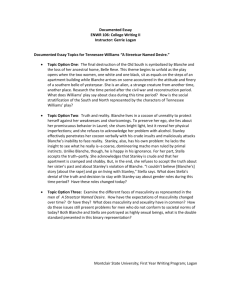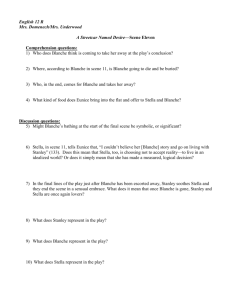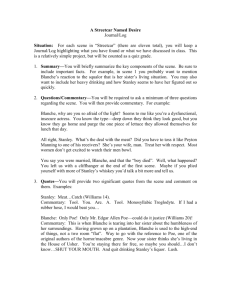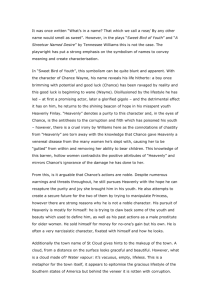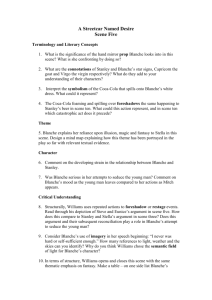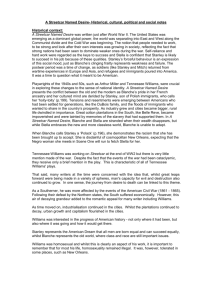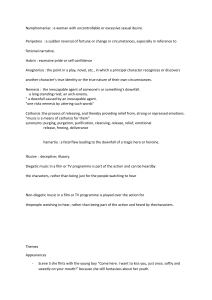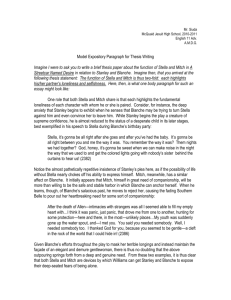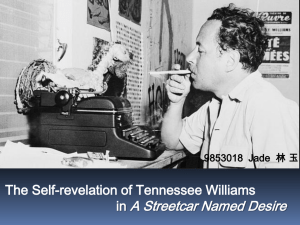OLD and NEW South
advertisement
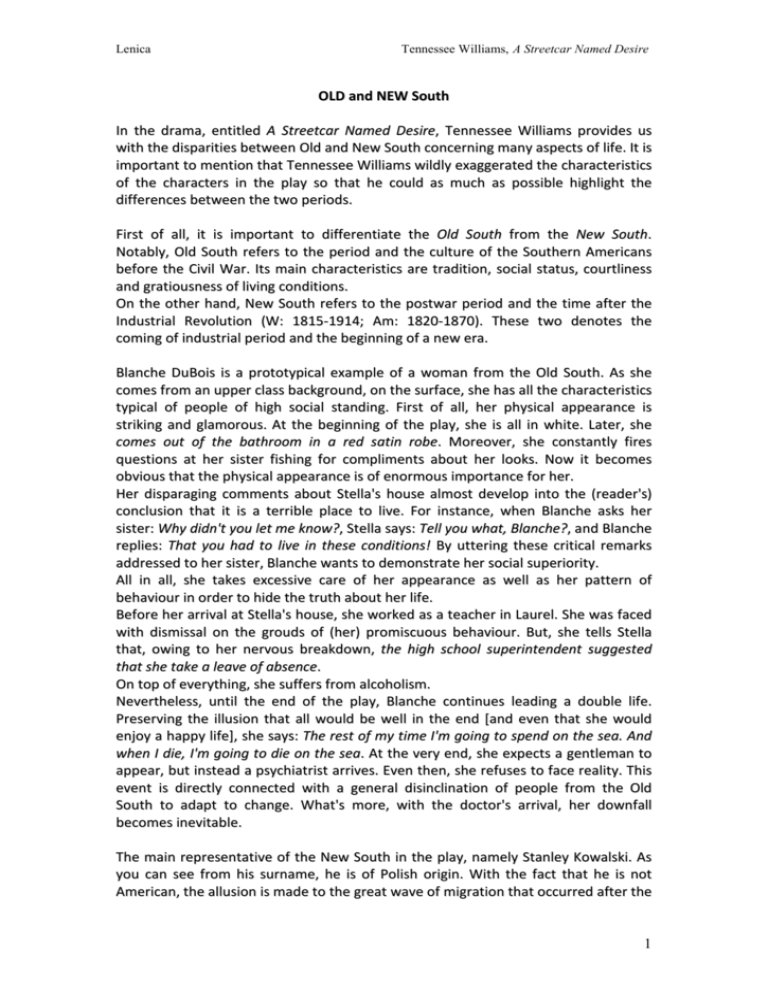
Lenica Tennessee Williams, A Streetcar Named Desire OLD and NEW South In the drama, entitled A Streetcar Named Desire, Tennessee Williams provides us with the disparities between Old and New South concerning many aspects of life. It is important to mention that Tennessee Williams wildly exaggerated the characteristics of the characters in the play so that he could as much as possible highlight the differences between the two periods. First of all, it is important to differentiate the Old South from the New South. Notably, Old South refers to the period and the culture of the Southern Americans before the Civil War. Its main characteristics are tradition, social status, courtliness and gratiousness of living conditions. On the other hand, New South refers to the postwar period and the time after the Industrial Revolution (W: 1815-1914; Am: 1820-1870). These two denotes the coming of industrial period and the beginning of a new era. Blanche DuBois is a prototypical example of a woman from the Old South. As she comes from an upper class background, on the surface, she has all the characteristics typical of people of high social standing. First of all, her physical appearance is striking and glamorous. At the beginning of the play, she is all in white. Later, she comes out of the bathroom in a red satin robe. Moreover, she constantly fires questions at her sister fishing for compliments about her looks. Now it becomes obvious that the physical appearance is of enormous importance for her. Her disparaging comments about Stella's house almost develop into the (reader's) conclusion that it is a terrible place to live. For instance, when Blanche asks her sister: Why didn't you let me know?, Stella says: Tell you what, Blanche?, and Blanche replies: That you had to live in these conditions! By uttering these critical remarks addressed to her sister, Blanche wants to demonstrate her social superiority. All in all, she takes excessive care of her appearance as well as her pattern of behaviour in order to hide the truth about her life. Before her arrival at Stella's house, she worked as a teacher in Laurel. She was faced with dismissal on the grouds of (her) promiscuous behaviour. But, she tells Stella that, owing to her nervous breakdown, the high school superintendent suggested that she take a leave of absence. On top of everything, she suffers from alcoholism. Nevertheless, until the end of the play, Blanche continues leading a double life. Preserving the illusion that all would be well in the end [and even that she would enjoy a happy life], she says: The rest of my time I'm going to spend on the sea. And when I die, I'm going to die on the sea. At the very end, she expects a gentleman to appear, but instead a psychiatrist arrives. Even then, she refuses to face reality. This event is directly connected with a general disinclination of people from the Old South to adapt to change. What's more, with the doctor's arrival, her downfall becomes inevitable. The main representative of the New South in the play, namely Stanley Kowalski. As you can see from his surname, he is of Polish origin. With the fact that he is not American, the allusion is made to the great wave of migration that occurred after the 1 Lenica Tennessee Williams, A Streetcar Named Desire Revolution. Consequently, the variety of nationalities became sth perfectly ordinary. However, when Stanley appears for the first time in the play, he is roughly dressed in blue denim work clothes. With a working class background, Stenley's financial and social circumstances are not so favourable. Besides his job, the only activity he is involved in is playing games with friends, which is his common form of entertainment. So, he displays steadfast loyalty towards his friends with whom he plays poker regularly. On the contrary, the fact that he beats his wife occasionally shows his brutality and barbarousness. That he is uncivilized and ill-mannered can also be notices when he changes his clothes in front of Blanches' eyes. Not long after, he even seduces her. One of the peculiarities (characteristics) of the Old South can be noticed in the character which does not become visible in the drama, namely Blanche's exhusband. When his wife gets to know about his homosexuality, he takes his own life in order to preserve his dignity. His decision refers to the code of honour (kodeks časti), which was pre-eminent in the Old South. Above all, the disparity as well as the disagreement between Blanche and Stanley tells us about the fact that Old and New South cannot anyhow concur with each other. The absurdity and ridiculousness of the features of the Old South to the people of (more) modern ages can be found, as previously stated, in Blanche's behaviour which is perceived as undesirable and upsetting by all the others in the play. In other words, one Old South lady finds herself in the New South environment and consequently she fails to stay/be rational and even gets mentally ill in such occurences. With such a storyline, Tennessee Williams not only points out a number of central features of both periods, but also proves that, just as Blanche was rejected from the society, the Old South was turned down. All things considered, through the convincing story of Blanche's downfall, we get a wonderfully vivid depiction of the end of the Old South. 2

